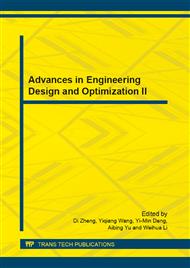p.202
p.207
p.212
p.216
p.220
p.224
p.228
p.232
p.236
Application of Partial Least-Squares Regression in the Prediction of Concrete Strength Taking into Account Interactional Items Among Independent Variables
Abstract:
Based on partial least-squares regression taking into account interactional items among independent variables, this paper had a prediction on concrete strength at the 28th day. Taking proportion of flyash in cementing material, usage amount of cementing material, ash-water ratio as independent variables , and concrete strength at the 28th day as dependent variable , the forecast model of concrete strength was obtained. It was found that press residual value decreased with the increase of number of latent variables, and number of latent variables were three according to Press residual value versus number of latent variables. The normal regression coefficient of ash-water ratio was the largest in three influence factors, this indicated that the influence of ash-water ratio was largest to concrete strength at the 28th day; The determination coefficient of forecast model obtained in this paper was 0.9353, the error of forecast model was. The following conclusion can be drawn that, the model is accurate and credible, and the partial least-squares regression taking into account interactional items among independent variables is a eximious non-linear method, and it is worthy to spread its application in the forecast analysis of concrete strength at the 28th day.
Info:
Periodical:
Pages:
220-223
Citation:
Online since:
September 2011
Authors:
Price:
Сopyright:
© 2012 Trans Tech Publications Ltd. All Rights Reserved
Share:
Citation:


